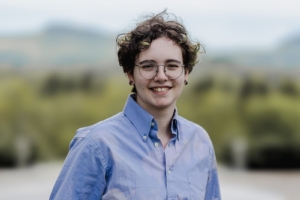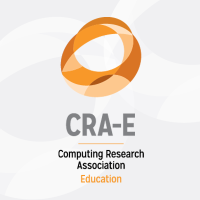Securing Machine Learning with Sequestered Encryption on GPU Hardware
By Alejandro Velasco Dimate (CRA-E Fellow, College of William & Mary) and Emma McDonald (CRA-E Fellow, University of Alberta)

Maryam Abuissa, B.S. in Math and Computer Science, Amherst College
This Q&A highlight features Maryam Abuissa, an Honorable Mention in the 2024 CRA Outstanding Undergraduate Researchers award program. Maryam finished their undergrad in Math and Computer Science at Amherst College and is now pursuing their PhD in Computer Science at Brown University.
What brought you to computing research?
I got involved in research when Professor Matteo Riondato at Amherst College offered me a research assistant position. Before that, I had only done research in my classes, mostly in the humanities, and I did not enjoy it. However, my professor encouraged me to try, because I had done well in the introductory computer science class and helped him design course materials over the summer. I trusted him, so I gave it a shot and found that I enjoyed it. My first project was in data mining, where we designed a new null model to validate patterns in observed datasets. Existing models assumed the order of data points mattered, which is not always true. We created order-agnostic models and developed an algorithm to sample from them efficiently. The results of our work were published in the Journal of Data Mining and Knowledge Discovery.
How did you select your research topic?
Through my first project, I discovered my passion for research and decided to continue, potentially pursuing graduate studies. I was interested in exploring multiple fields before committing to one. After enjoying a class in computer security, I talked with my advisor, Professor Scott Alfeld, and applied to NSF-REU opportunities in that research area. As a result, I worked with Professor Omer Khan on a hardware-focused security project, which offered a new direction from my previous research.
What can you tell us about your research?
My work extended a security framework called sequestered encryption to GPU hardware, which is essential for modern machine learning. I developed a solution that maintained the same security guarantees as sequestered encryption, designed specifically for GPUs, and analyzed its efficiency. As machine learning becomes more prevalent and models grow larger, there is increasing interest in running machine learning on sensitive data, like medical records, while maintaining privacy. Current solutions struggle to balance efficiency and security, and while sequestered encryption offered a good balance, it was designed for outdated hardware. Our design adapted it for modern GPUs, allowing us to retain its benefits in a more realistic hardware environment. I documented the results of our work and presented them to my cohort in the REU program.
What challenges did you have during research?
Because I was new to computer science when I started research, I was unfamiliar with tools like IDEs, terminals, scripts, and version control systems, and I often felt confused by things that seemed basic to others. After discussing this with my professor, he recommended MIT’s The Missing Semester of Your CS Education, an online lecture series that helped me understand these tools and boosted my confidence as a computer scientist and researcher. I also struggled with prioritizing tasks and committing to a research direction without frequent input from my advisor. Additionally, as a nonbinary person, I sometimes felt out of place in peer groups that were mostly men, even though they were generally welcoming. Over time, I learned the importance of trusting my own judgment while working and regularly updating my advisor to ensure I stayed on track. Through this experience, I learned more about the balance of communicating with my advisor that worked for me.
What are your favorite aspects of research?
I enjoy learning and group problem-solving. A lot of my time, especially in theoretical research, is spent exploring new concepts through textbooks or papers and collaborating with other students or my advisor at the whiteboard. For me, those two things are the most fun way to entertain my curiosity about the world.
How do you keep your motivation in research?
I go through periods of feeling more and less inspired. I think that you can’t expect yourself to feel constantly engaged in something that can be as exhausting and foreign as research, especially as a young researcher. I often find motivation when I talk to others about research or give myself time to think deeply about problems, even if it does not lead to immediate results. Exploring interesting questions inspires future work and I believe it is important for researchers to find balance, keeping the big picture in mind while also focusing on the details. For me, making time for art and music is essential to feeling fulfilled and excited about research. Although it is possible to blend research and art, I enjoy them for different reasons, even if it means stepping away from research temporarily.
Do you have any advice for other students looking to get into research?
I would encourage students interested in research to allow themselves to feel confused. When I first started, I thought I must not be cut out for research because I felt confused all the time, but my confusion was a sign that I was challenging my limits. If you wait until you have figured everything out to start doing research, you will never actually do any research. It has been extremely helpful for me as a researcher to get comfortable with feeling uncomfortable, confused, and out of my depth.









